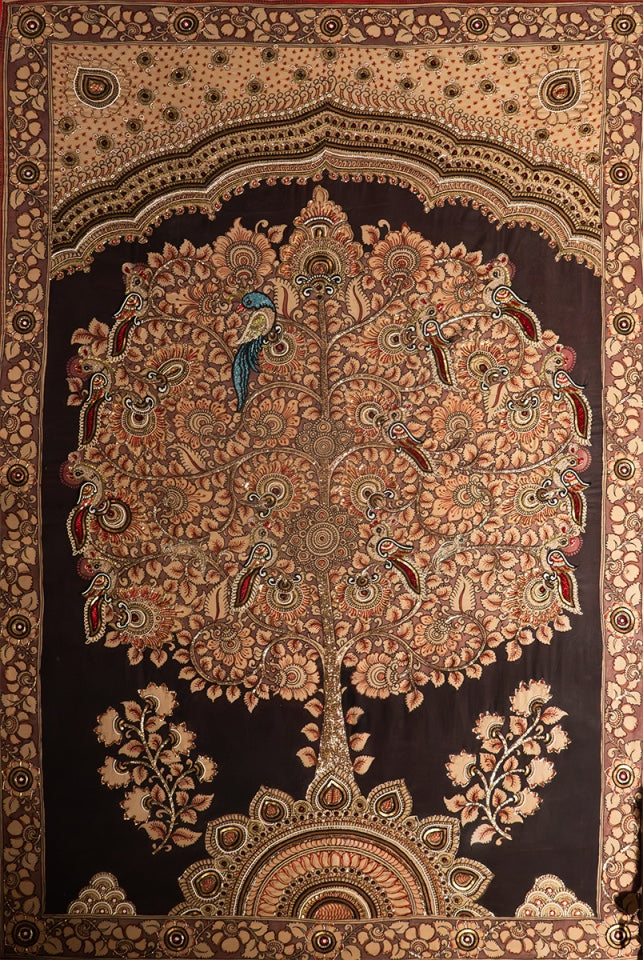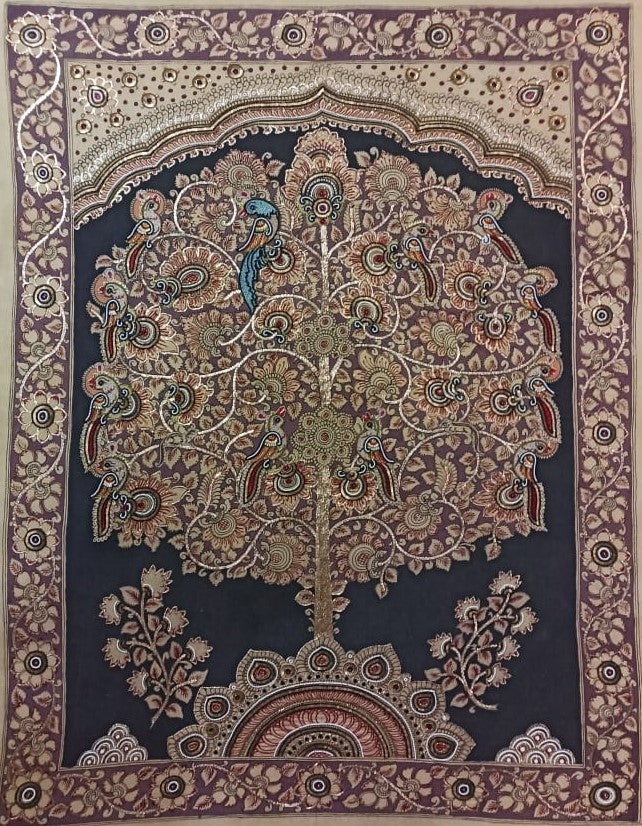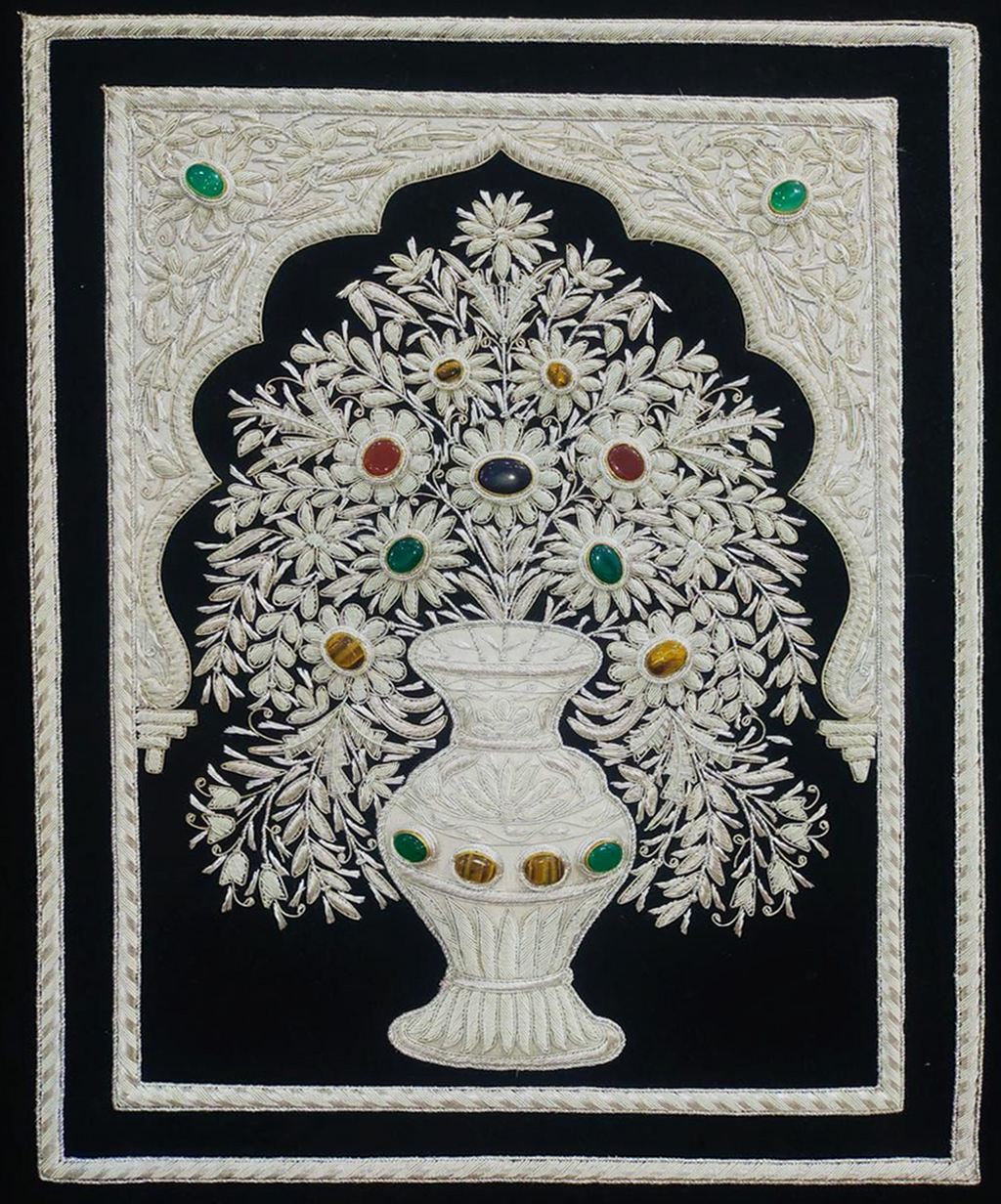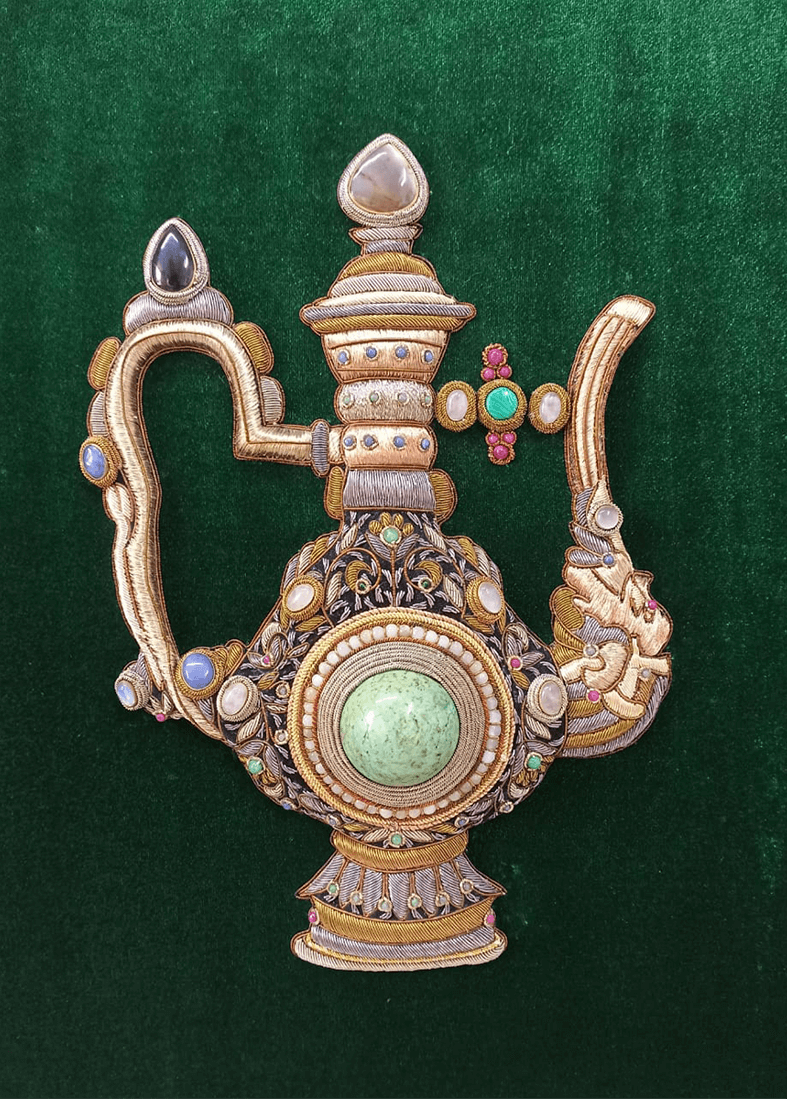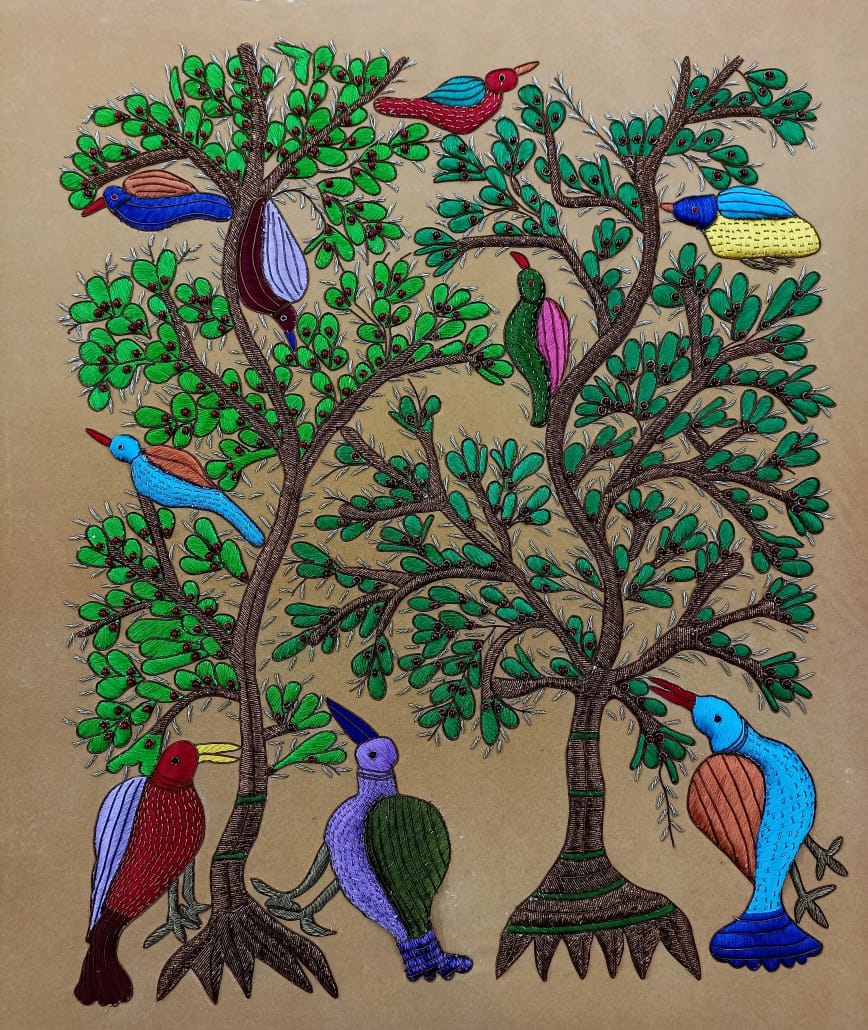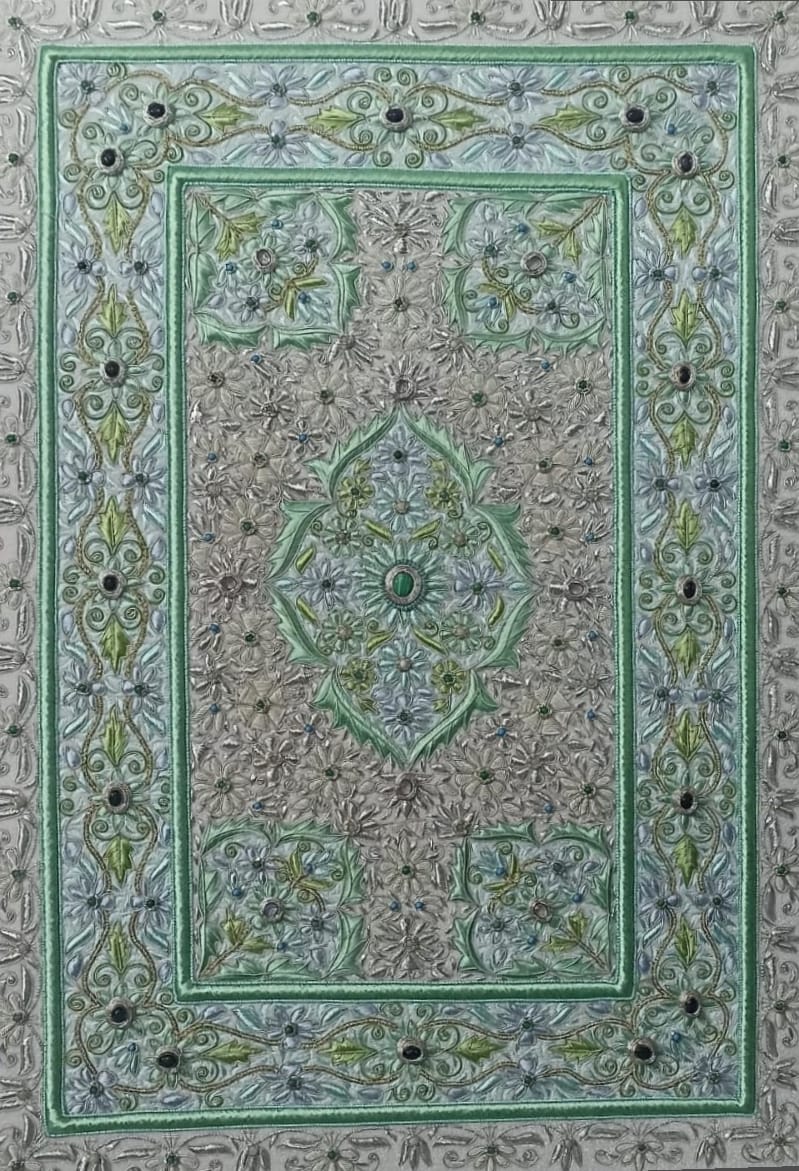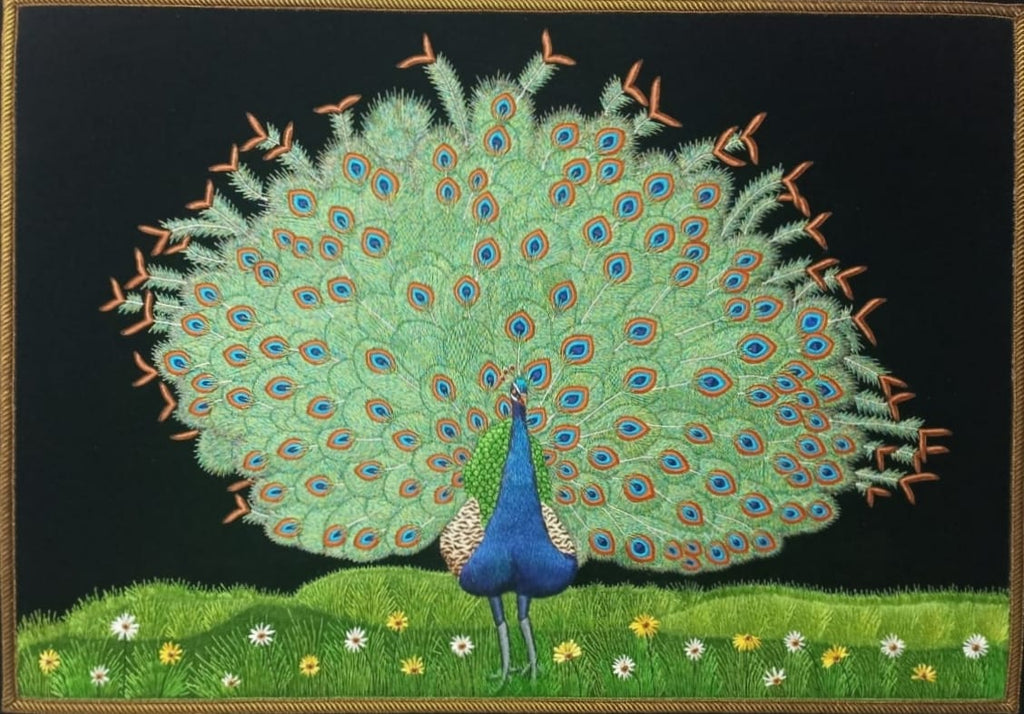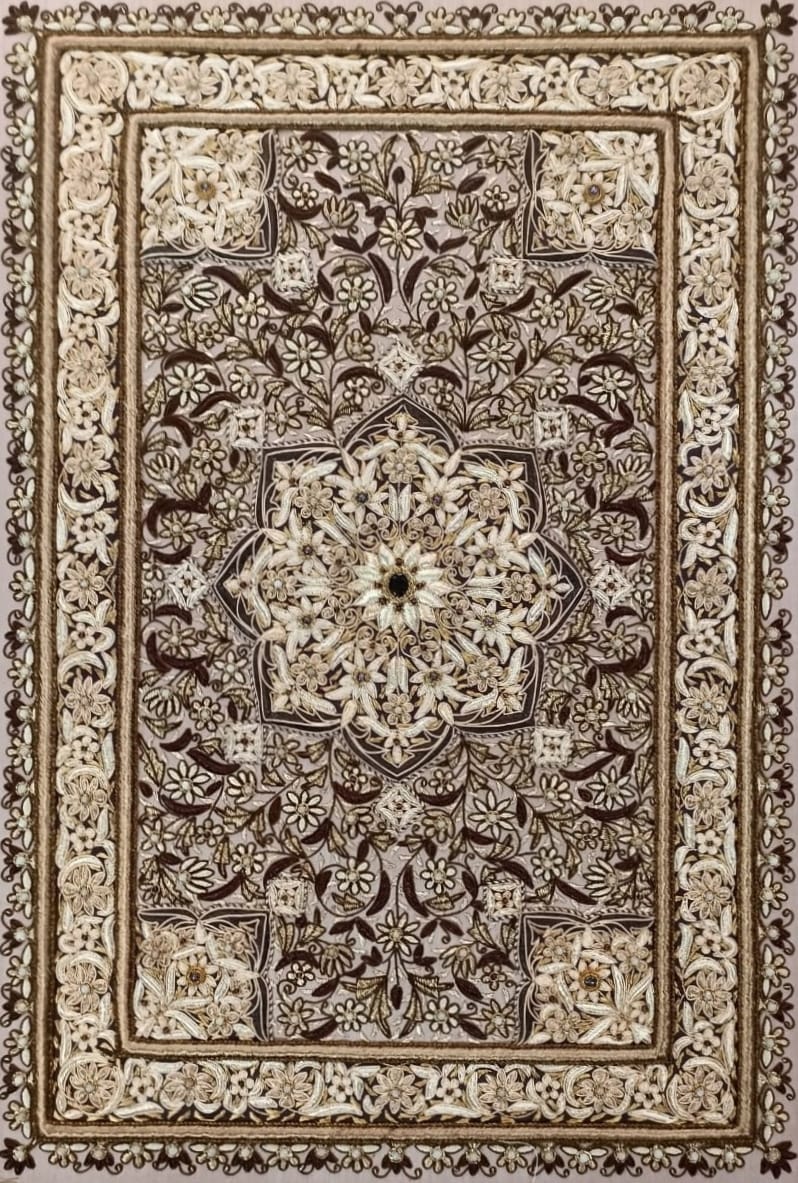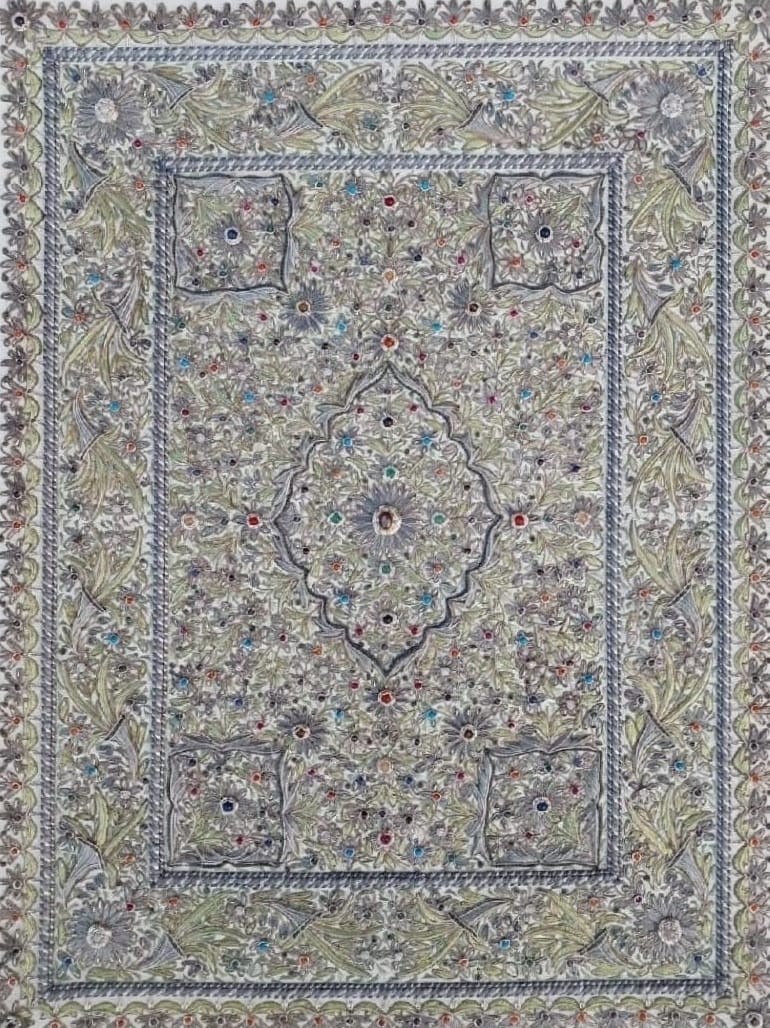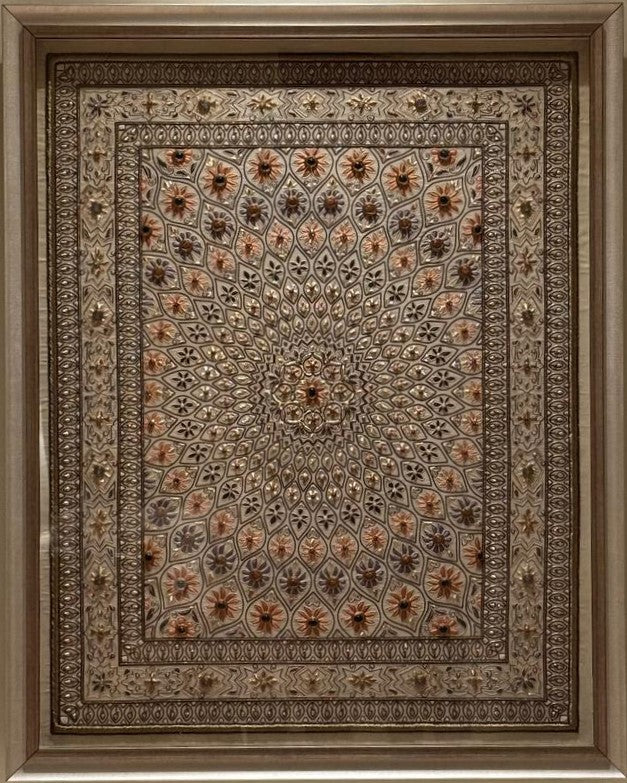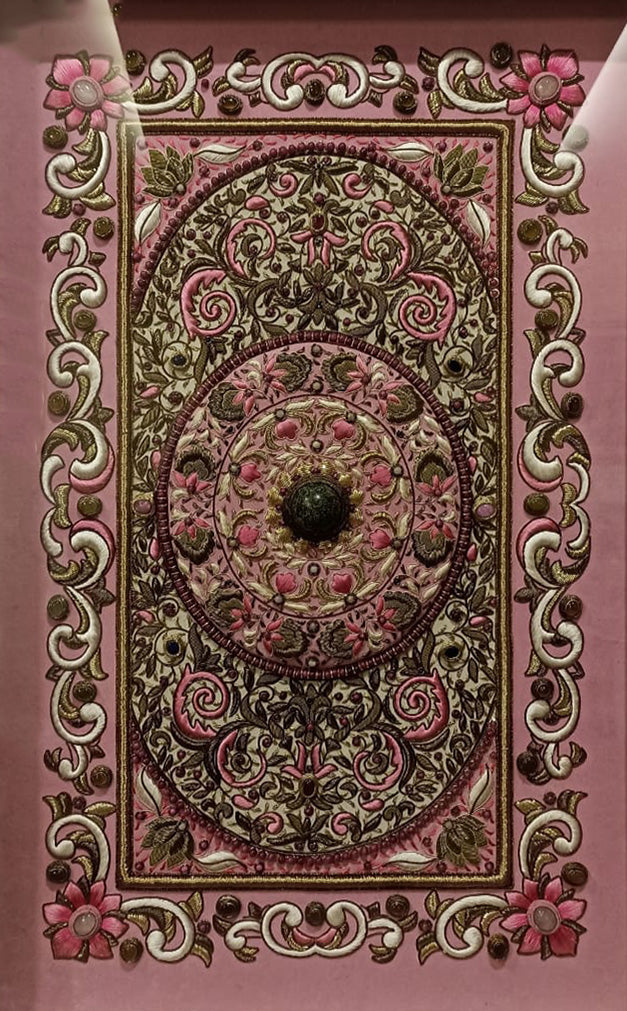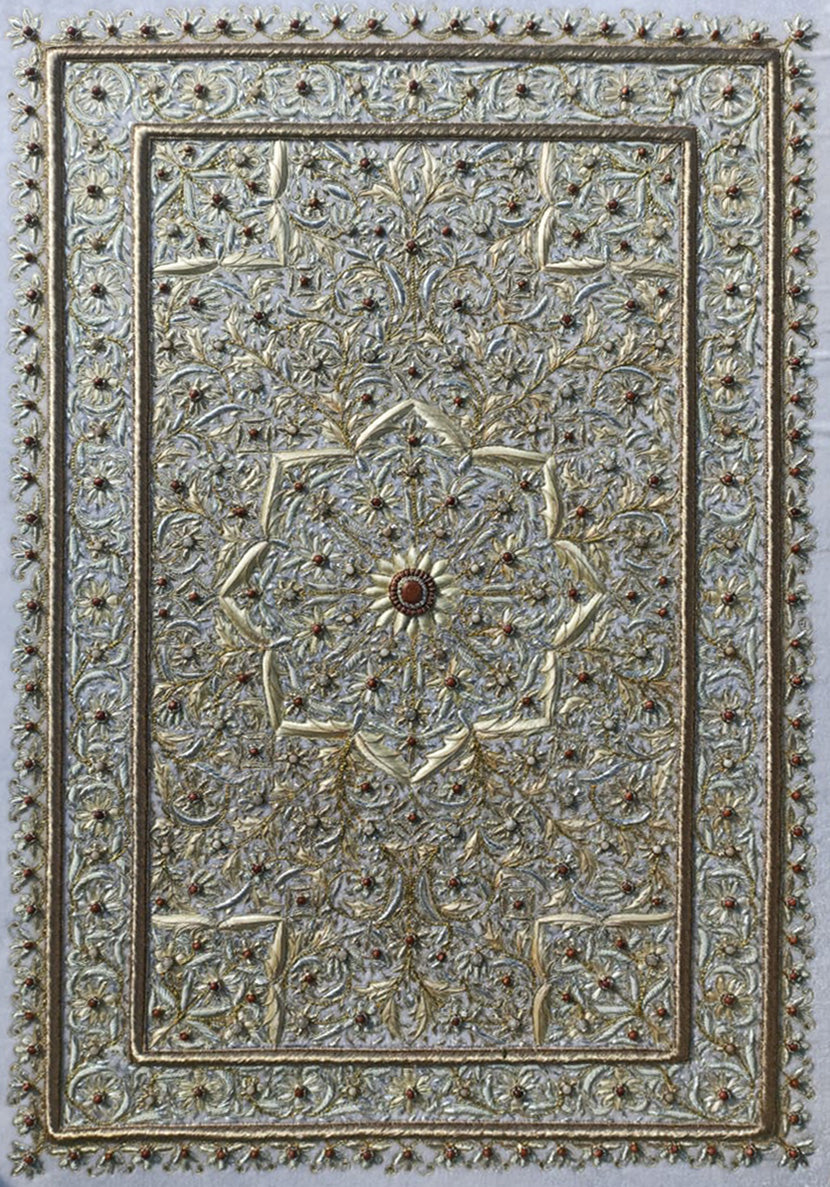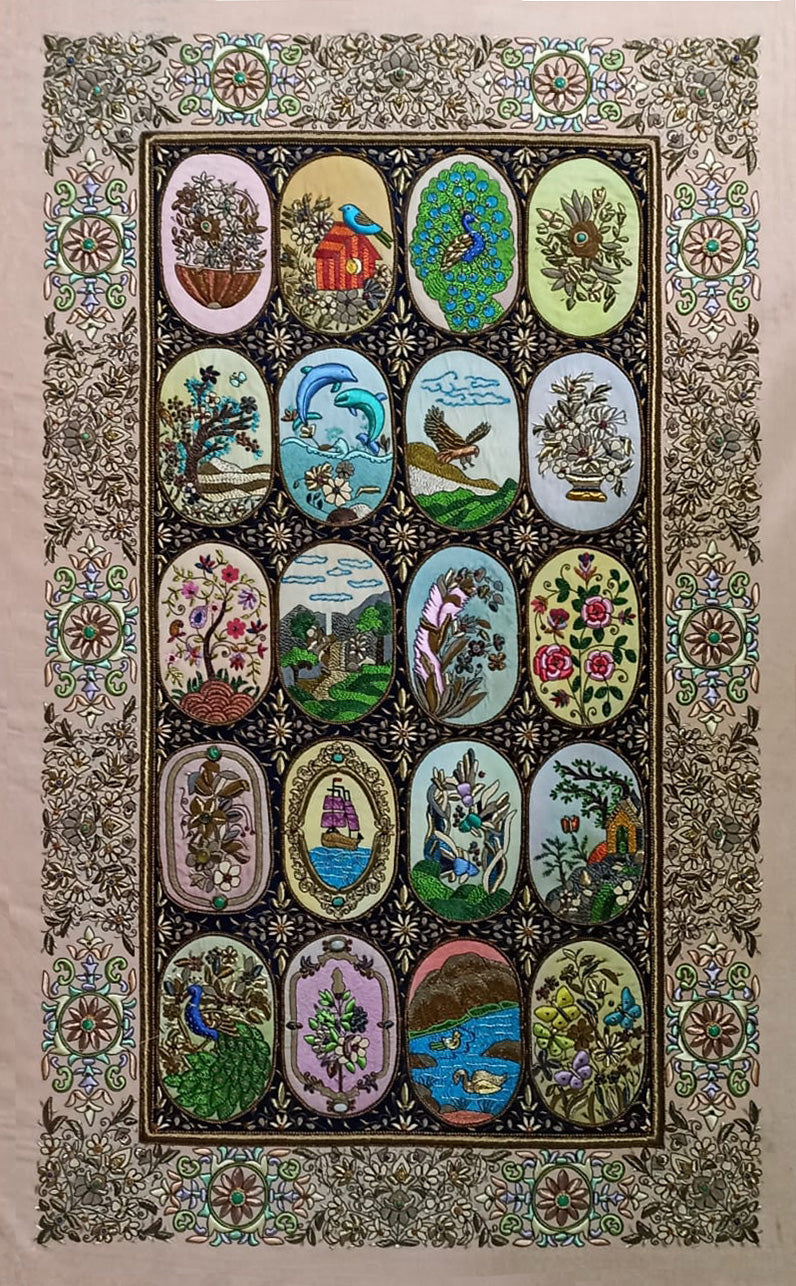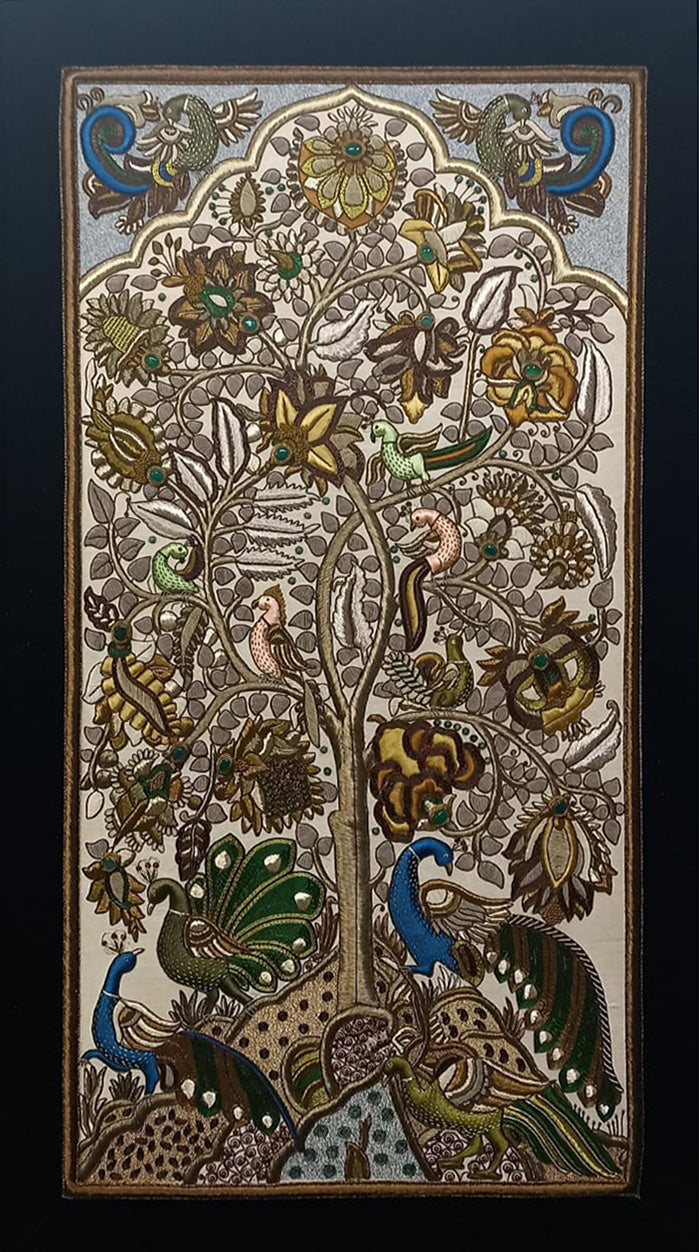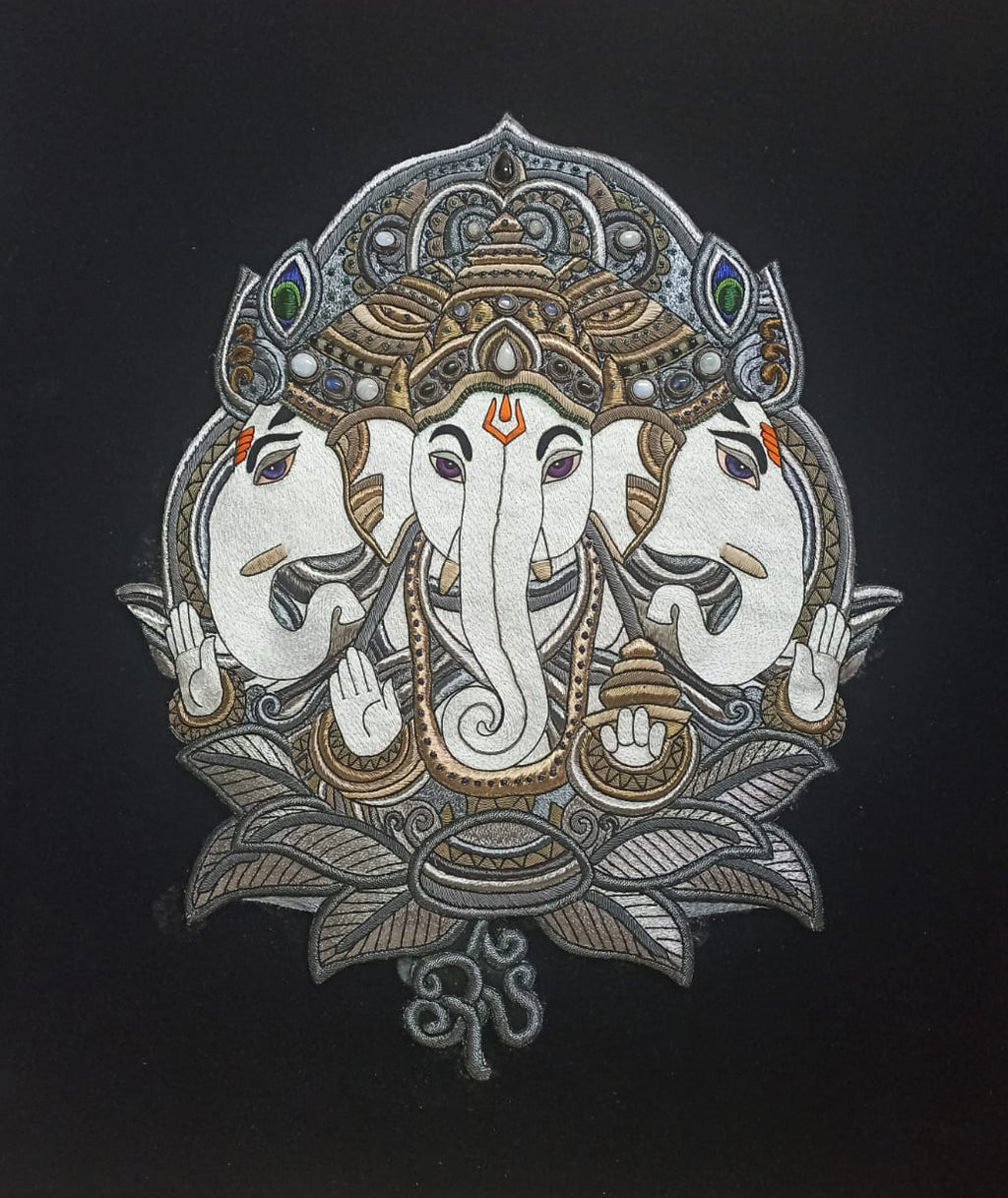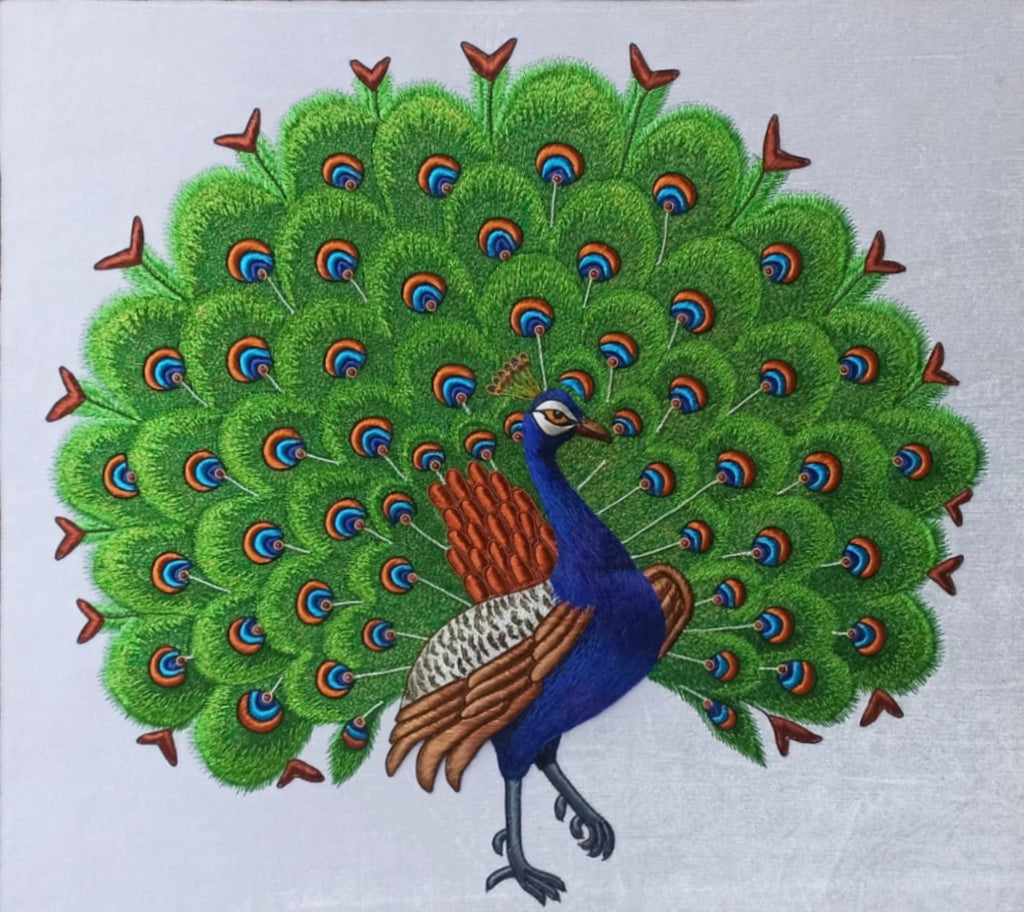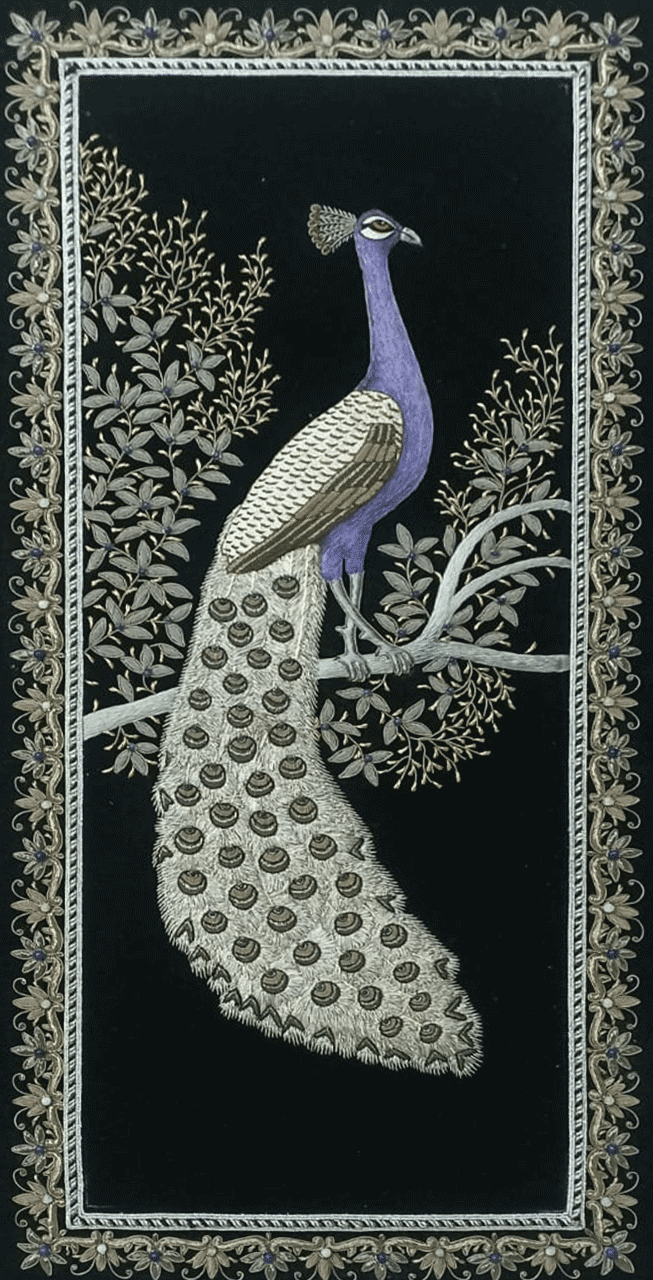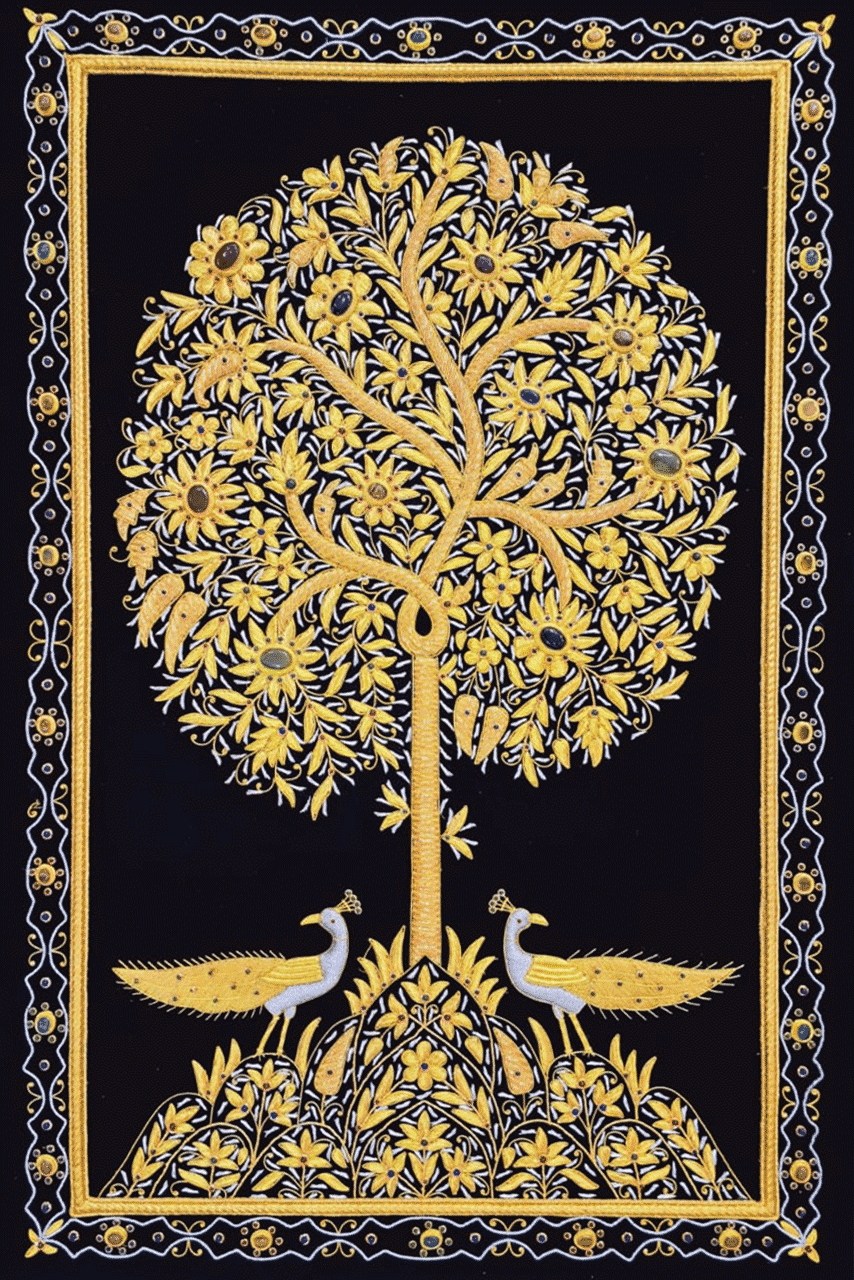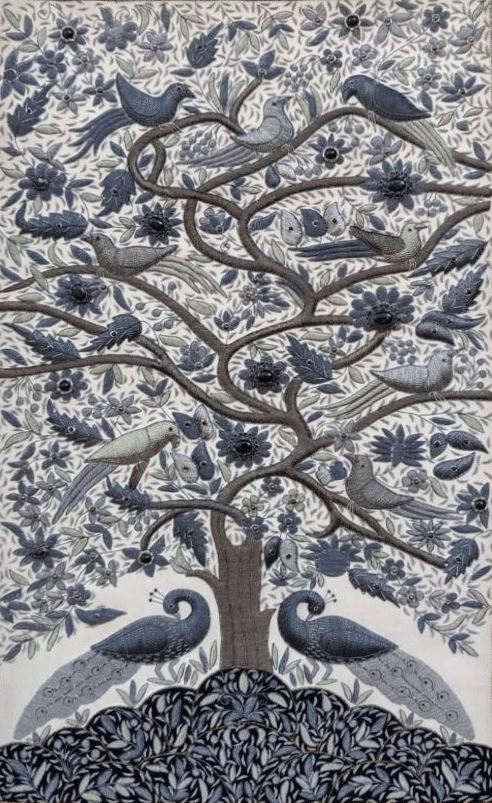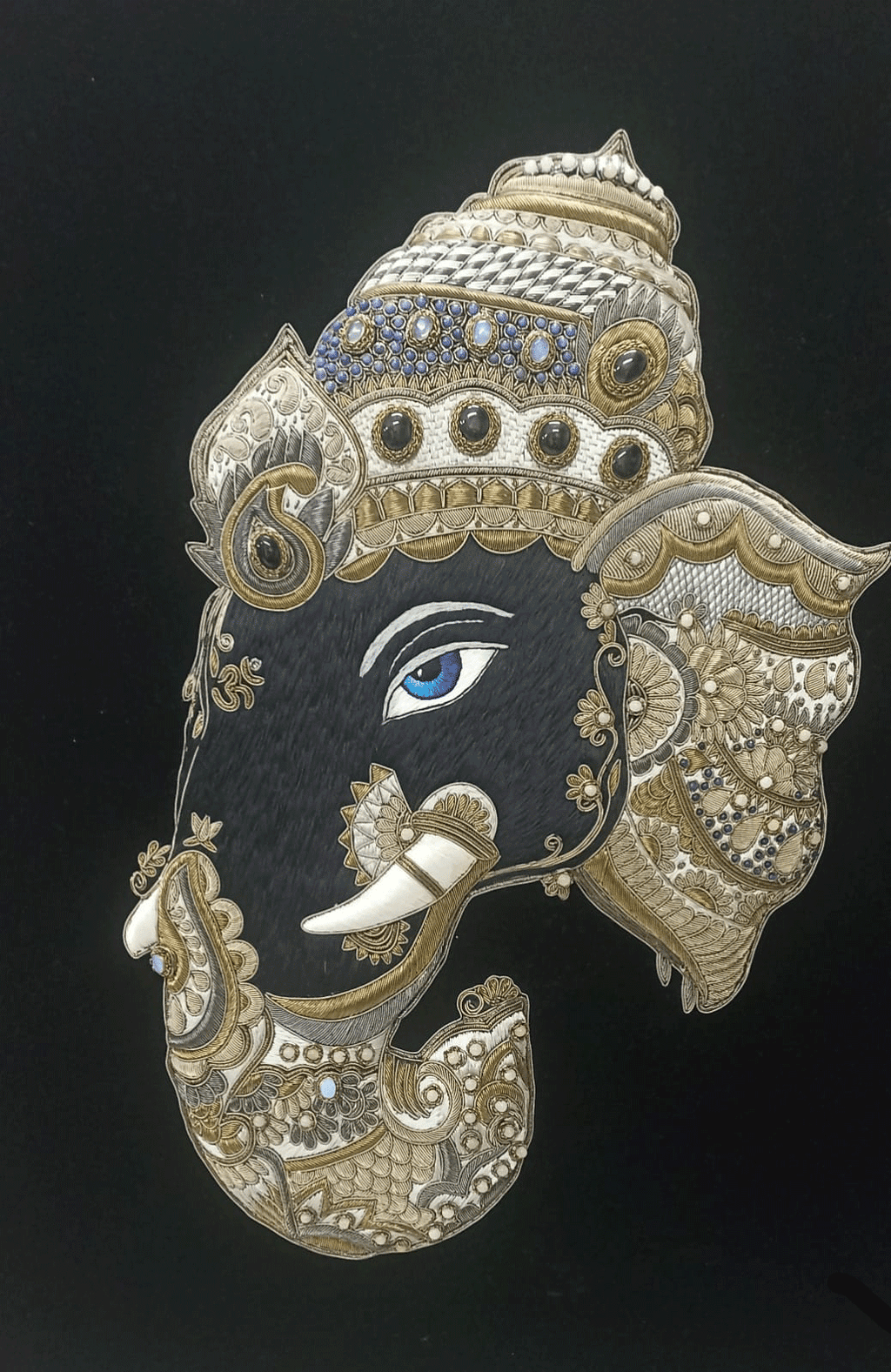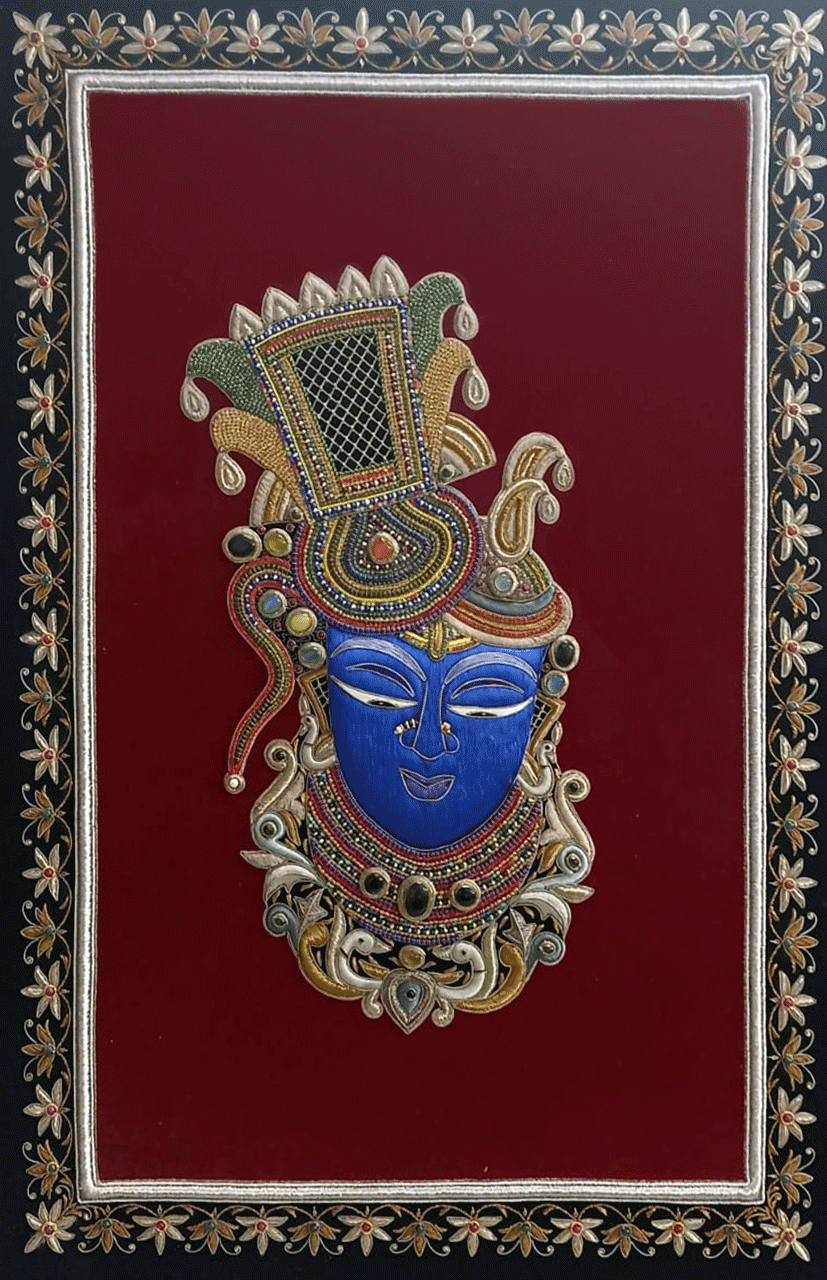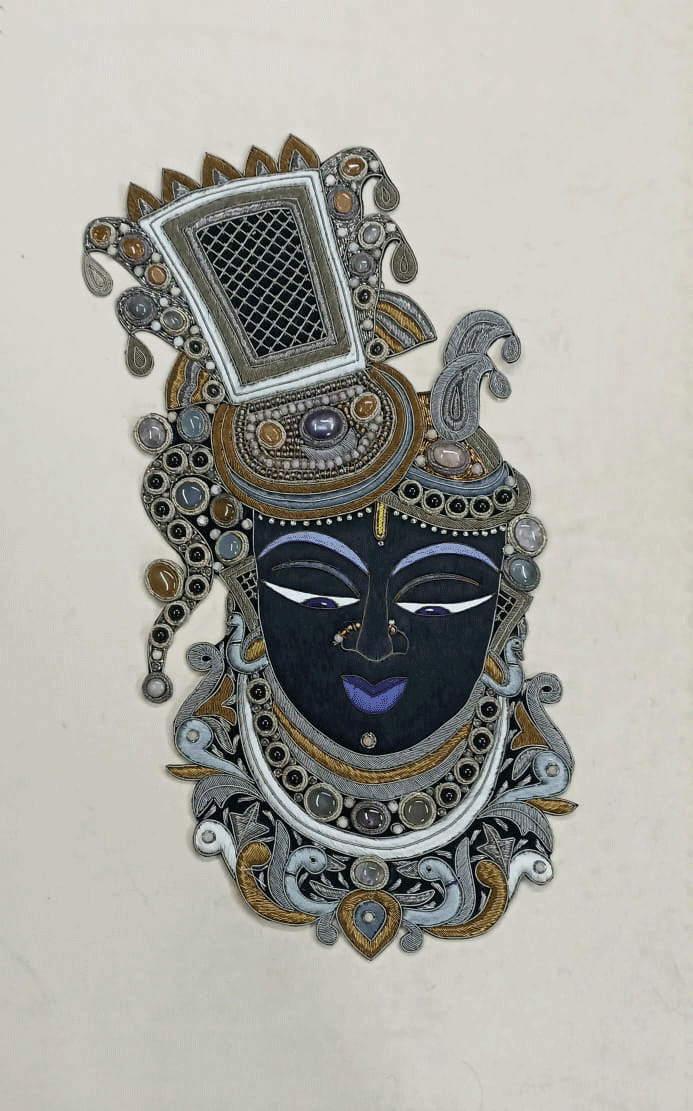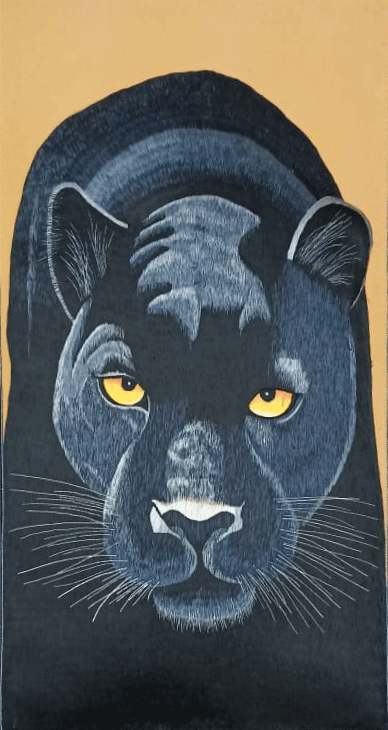Zardozi is a style of embroidery that came to India from central Asia around the 12th century. It flourished under the patronage of Mughal emperors and Indian royalty and over time, became synonymous with opulence and luxury, adorning the garments, textiles, and accessories of kings, nobles, and aristocrats.
Zardozi embroidery is characterized by the use of metallic threads, typically made of gold or silver, embellished with sequins, beads, and precious stones. Heavy fabrics like velvet, silk, and satin serve as the base for Zardozi work. The intricate designs are meticulously handcrafted using a variety of stitches, including satin stitch, chain stitch, and couching, to create elaborate patterns and motifs. While a simple needle can also be used, zari zardozi embroidery generally uses a hook-tipped awl, locally called 'ari', which makes for greater efficiency, as it enables the artisans to work on both sides of the fabric.


